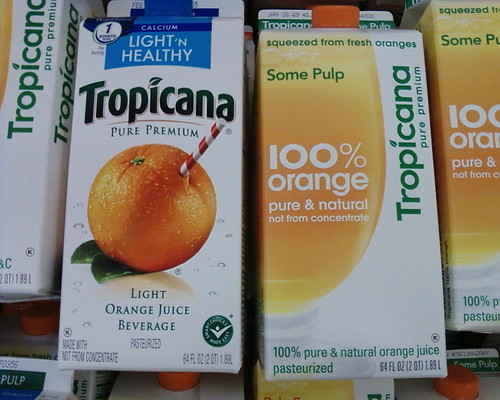If you’re new to the world of juicing, it’s likely that the terminology has left you feeling a little out the loop. To give you a helping hand, we thought we’d give you the low down on all the latest juicing jargon.

Cold-pressed juicers contain plenty of nutrition, as the ingredients aren’t heated.
Cold-Pressed / Masticating
Cold-Pressed juice is created with a press and a slow pulveriser. The great thing about this juicing process is that it’s really slow and therefore doesn’t create heat. Keeping the ingredients cool is necessary for preserving all the important nutrients. So if you want your juices to be full of goodness with the essential vitamins, minerals and enzymes, this method is for you.
HPP
HPP stands for high pressure processing and is a non-thermal pasteurisation process. This method preserves and sterilises juice by applying very high pressure through a water bath that surrounds the product. The purpose of HPP is to increase the shelf life of juices through deactivation of certain microorganisms and enzymes which slows the deterioration by stopping the chemical activity caused by microorganisms.
From concentrate
If your juice is from concentrate then the juice content which is a thick liquid is separated from the water content within the juice. Water is then added to the juice content before bottling and packaging. The purpose of this is to remove the water content prior to shipping to save on the shipping cost and upon receipt at the bottling plant, water is added to the concentrate, pasteurised and packaged.

The packaging should tell you if the juice is made from concentrate or not from concentrate.
Not from concentrate
Juices that are not from concentrate have not been concentrated (the clue is in the name). It basically means that the juice has been freshly squeezed from a fruit or vegetable and then pasteurised and packaged.
Freshly squeezed juice
A freshly squeezed juice is not pasteurised. It comes straight from a fruit or vegetable and is poured into a container and kept under refrigeration, retaining all of its goodness.
100% Pure
A juice can be described as 100% Pure (or 100% Juice) if it has been directly squeezed from a fruit or vegetable. 100% pure juices can also be made from juice concentrate that has been reconstituted with water and certain other ingredients like vitamins.
Raw juice
Raw juice is the term used for juice that has not been heated, pasteurised or processed. It contains living enzymes, vitamins and minerals, allowing you to benefit from maximum nutritional value.
Centrifugal
If juice is extracted with a fast-spinning blade known as centrifugal juicing, there’s a high chance that it will have lost a lot of the important nutrients, having been exposed to high temperatures. The problem is that the heat from the blades destroys enzymes and starts the oxidation process, causing the deterioration of the ingredients’ ‘good bits.’
Pasteurised
Pasteurising juice involves heating it in order to preserve its shelf life and destroy harmful bacteria and pathogens. The trouble is that many essential enzymes are also destroyed in the process, lowering the juices nutritional value.
Juice drinks
A juice drink is a drink that does not contain 100% juice. Instead it will feature ingredients such as sweeteners and water. Manufacturers are required by law to list the ingredients, as well as the total percentage of juice content.
We hope our juicing glossary has given you a better insight to the terminology used on juice bottles. Now at least you’ll know exactly what you’re buying next time you’re looking for a healthy juice!

